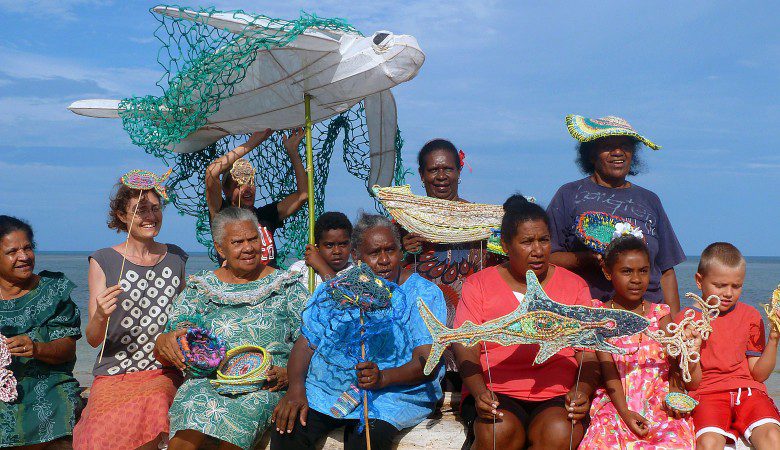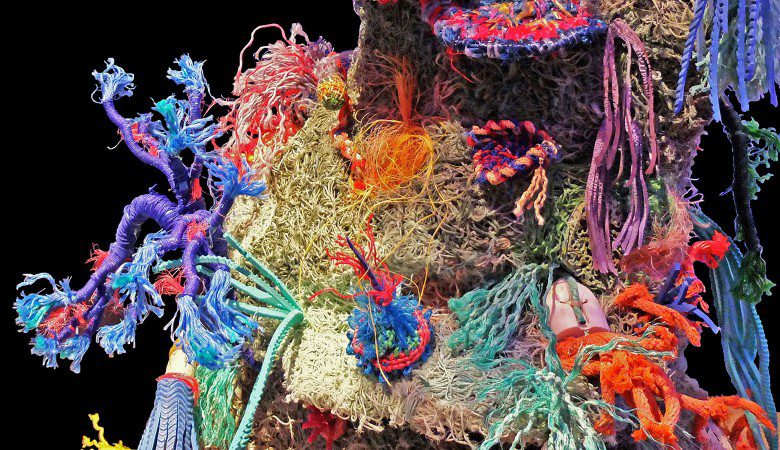Ghost net art is a powerful vehicle for raising awareness about the damage that ghost nets inflict on the marine environment. With creativity, Indigenous communities have shown us how to transform discarded nets into breathtaking artworks, weaving stories of resilience and conservation.
Even before we began working with Indigenous rangers in northern Australia, people were repurposing ghost nets in diverse ways: as screens on verandahs, adorned with shells and glass or plastic floats; or fencing for chickens. Fishing and yam bags were made from pieces of ghost net found washed up on local beaches.
One place you wouldn’t find ghost nets though, was on display in museums and art galleries. But things have changed.
Our Ghost Net Art Director, Sue Ryan created the Ghost Net Art Project in 2009 from the conundrum of what to do with the mountains of ghost nets and other marine debris that Indigenous rangers were retrieving from beaches along Australia’s remote northern coastline.
The Ghost Net Art Project focuses on working with communities in ‘ghost net hotspots’ across northern Australia, sponsoring workshops with a view to engaging community members to create art and craft. Since the early days, ghost net art has featured in exhibitions around Australia, and important state and national and now international institutions have acquired many major pieces for their collections. Many communities across northern Australia are now involved in ghostnet art, creating beautiful pieces.

Ghost net art workshops
Fibre artists facilitating workshops in remote communities were key to encouraging local artisans to see ghost nets as a valuable material to work with. Over the years, we have sponsored more than thirty ghost net art workshops from remote Darnley Island in the Torres Straits to South Goulburn Island in the Arafura Sea. Most recently we have run workshops in the Solomon Islands and Vanuatu with local artists.
Interested in running a Ghostnet Art workshop or getting involved – please get in touch.
The first ghost net art workshop with Erub/ Darnley Island:
Aurukun: One of the first Ghost Net Art workshops we ran.
